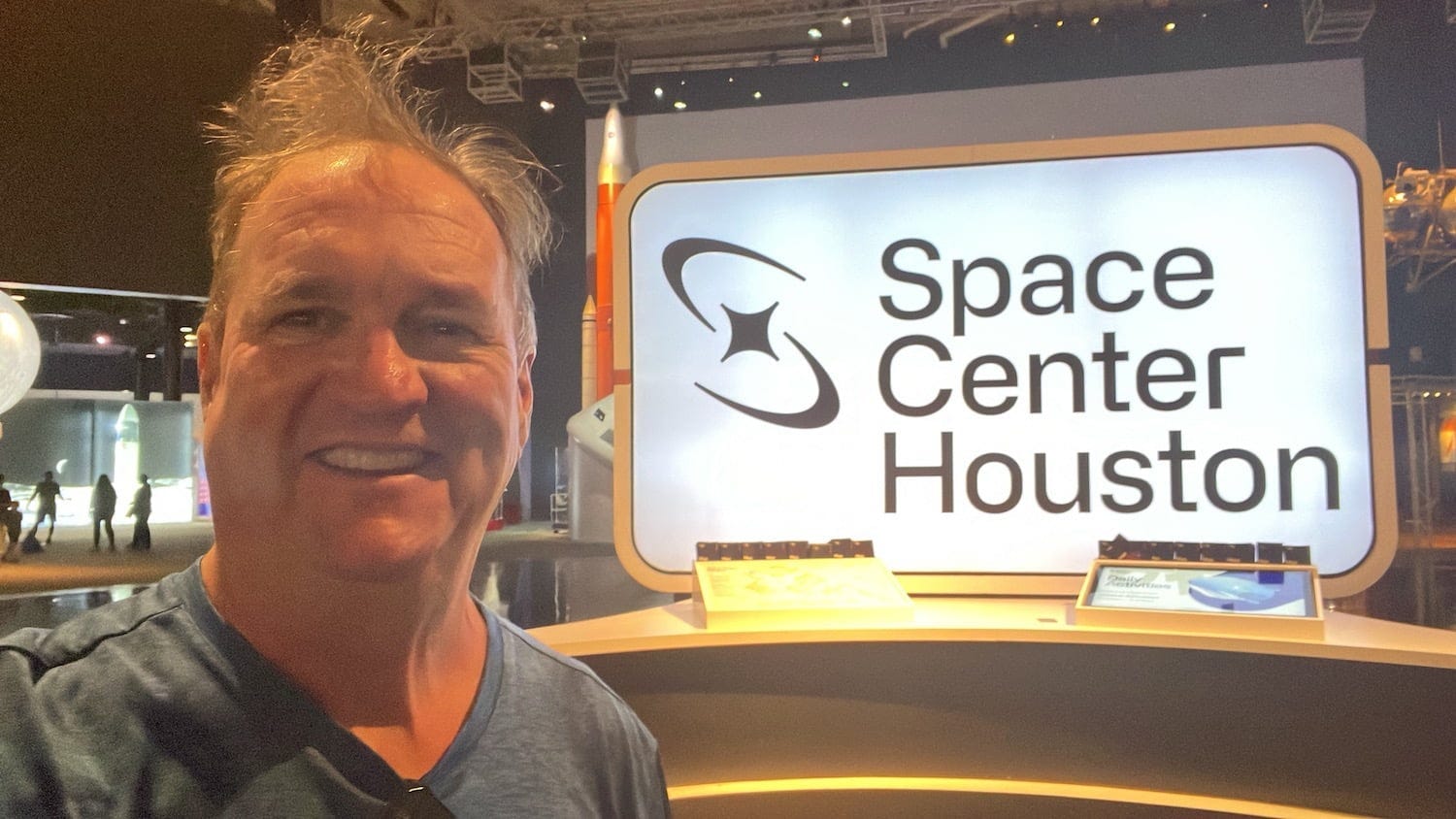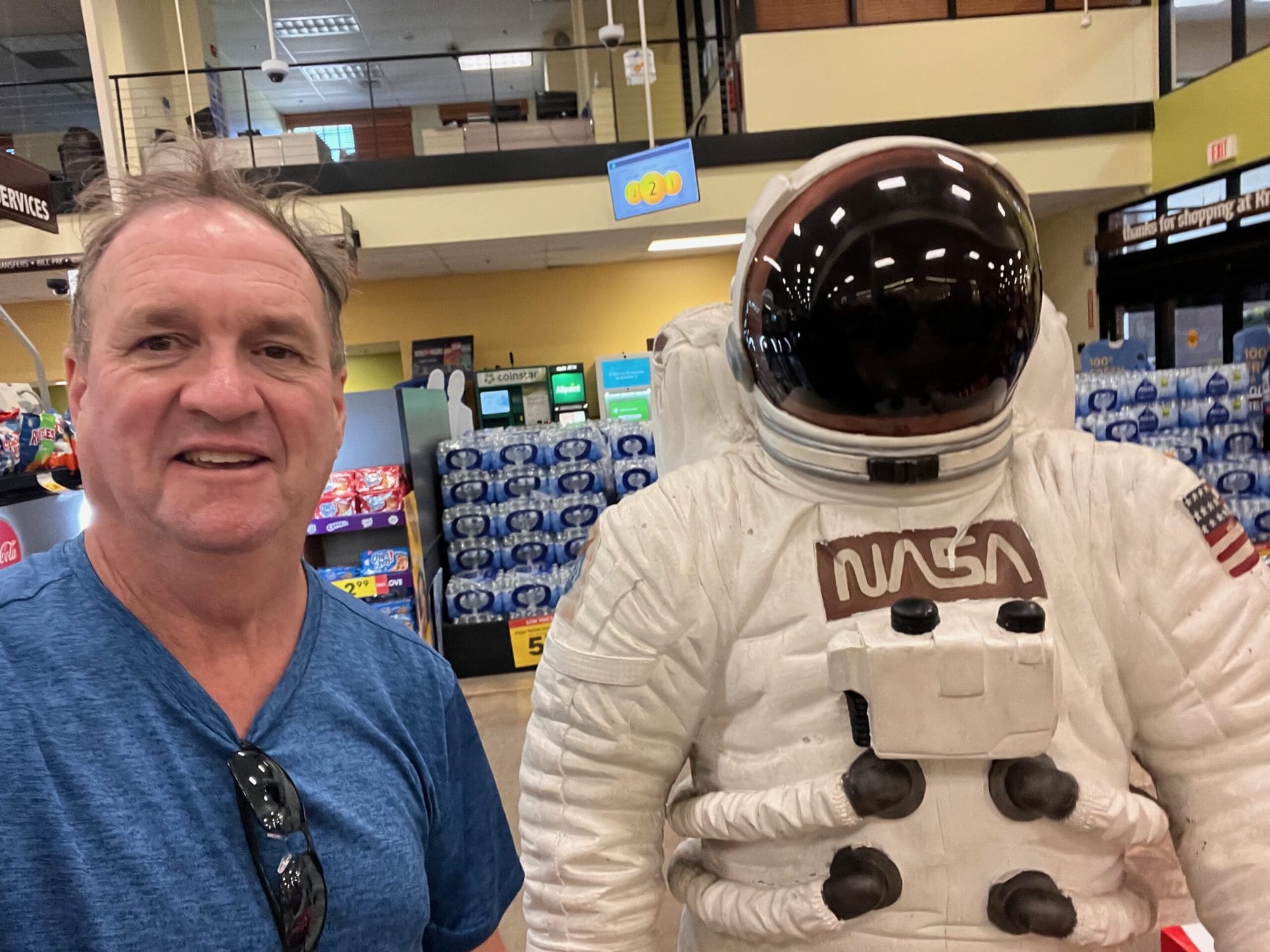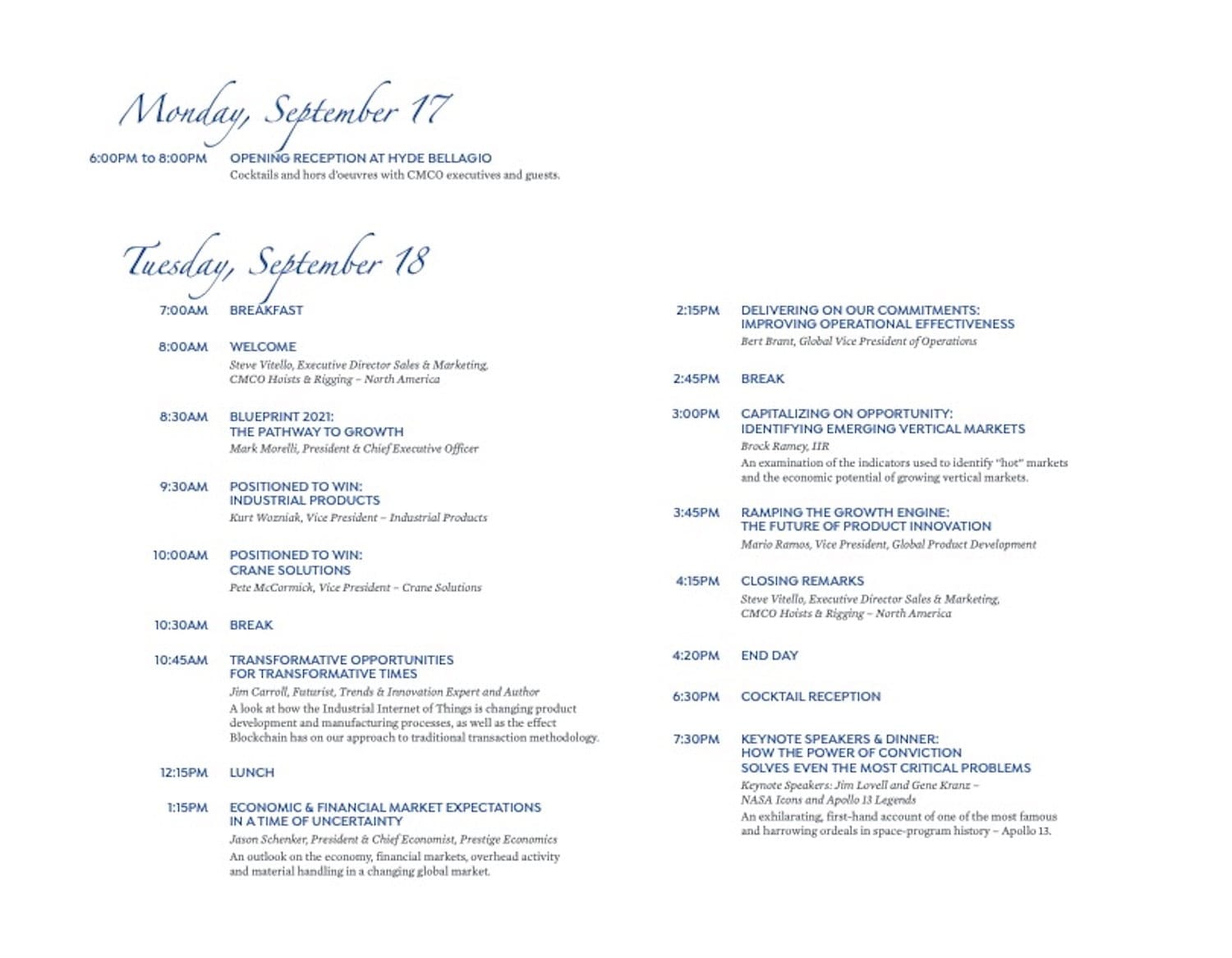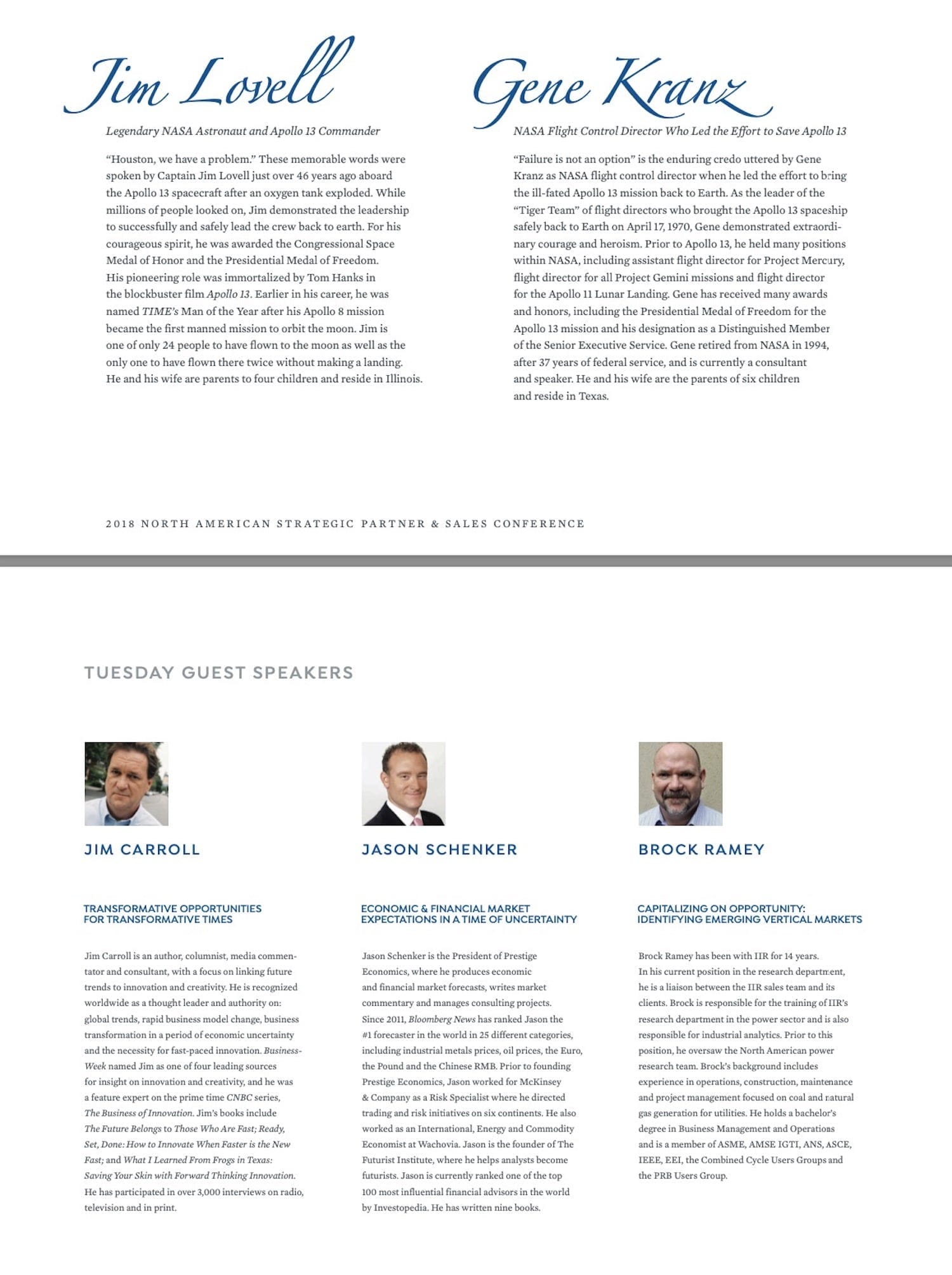I'm a space nerd. Yesterday, I was space nerdering. As you can see, it was a hair-raising experience. (My wife came up with that one!)

It was a fun day - I mean, they even feature the storyline in grocery stores:

In any event, I've obviously found a lot of futuristic, innovation-themed insight with NASA and the space industry. And I've been shocked when I've been invited (twice) to speak to NASA - to a room full of astronauts, launch directors, and more. As I reported after the first one down in Houston:
What do you do when you are the worlds leading space organization, and things are in a bit of a funk? Funding cutbacks, the cancellation of missions and programs,
You engage a futurist to come in for a talk on the issue of 'transformational leadership' and what great leaders do to redefine their future in an era of significant transition.
And NASA found me, and I found myself in a room giving a dinner talk to a group that included astronauts, launch directors, (literally) rocket engineers and more.
One thing I did - in order to take them into the future,I took them back into their past to demonstrate to them all the other times that they faced similar situations, rose to the challenge, and accelerated to the future!
Read the blog post which summarized their reaction. One of the highlights of my 25 year speaking career!

There's a video at the end of this post where I recreate the story of what I spoke about on stage - I did this from my virtual broadcast studio back in 2021.
I've also had the good fortune to speak at many events where famed astronauts or other heroes of the space age were also on the agenda, such as this one in Las Vegas. It sends shivers down my spine every time I have the chance to meet these folks as a part of the deal.

Even to share the ink on the agenda of an event with these heroes of the universe is an incredible honour for me.

And I've had some unique circumstances along the way - I've done three keynotes where Chris Hadfield is one of the other speakers. At this particular one, he left a bit of a dilemma on the stage where I would find myself immediately after this talk. The clip is short - give it a watch - I was thinking quickly!
In any event, I was inspired yesterday with a thought as to what each of us should do when it comes to aligning with the future. We were in the original Mission Control, watching the scene when Neil Armstrong first stepped onto the lunar surface and issued one of the most famous quotes of all time, and the inspiration came immediately to mind - because I am always thinking of the next day's quote.
Create your own bold leap.
Why think small when you can pursue big dreams? Why do little things when you could be bigger in your goals? Why chase small ideas when there are small ones around?
As it happened, the book One Giant Leap was in my hotel room, and I started to re-read it. One of the opening paragraphs jumped out at me.
The leap to the moon in the 1960’s was an astonishing accomplishment. But why? What made it astonishing? We’ve lost track not just of the details;we’ve lost track of the plot itself. What exactly was the hard part?
The answer is simple: when president John Kennedy declared in 1961 that the United States would go to the moon, he was committing the nation to do something we couldn’t do. We didn’t have the tools, the equipment - we didn’t have the rockets or the launch pads, the space suits or the computers or the zero-gravity food - to go to the moon. And it isn’t just that we didn’t have what we would need; we didn’t even know what we would need. We didn’t have a list; no one in the world had a list. Indeed, our unpreparedness for the task goes a level deeper; we didn’t even know how to fly to the moon. We didn’t know what course to fly to get there from here. And, as the small example of lunar dirt shows, we didn’t know what we would find when we got there. Physicians worried that people wouldn’t be able to think in zero G.
Mathematicians worried that we wouldn’t be able to work out the math to rendezvous two spacecraft in orbit-to bring them together in space, docking them in flight both perfectly and safely. And that serious planetary scientist from Cornell worried that the lunar module would land on the moon and sink up to its landing struts in powdery lunar dirt, trapping the space travellers.
Commit yourself to trying to do something you think you can't do! Create your own bold leap!
Food for thought!
We can't be NASA, but we can find inspiration for our future by challenging ourselves to be bigger in our actions, words, mindsets, and goals.
Futurist Jim Carroll was ten years old when he watched the original moon landing. His two keynotes for NASA have been the absolute highlights of his 30-year speaking career.

